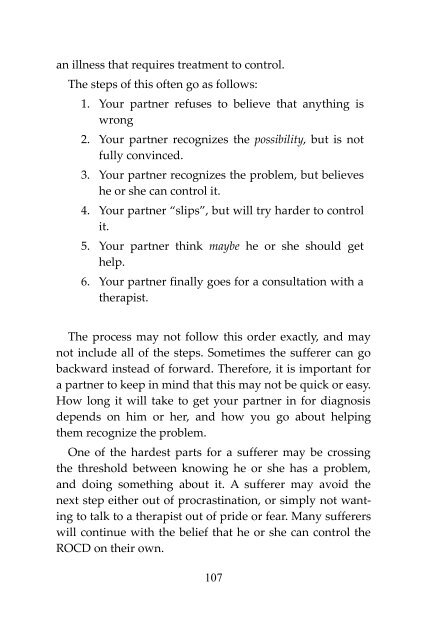You also want an ePaper? Increase the reach of your titles
YUMPU automatically turns print PDFs into web optimized ePapers that Google loves.
an illness that requires treatment to control.<br />
The steps of this often go as follows:<br />
1. Your partner refuses to believe that anything is<br />
wrong<br />
2. Your partner recognizes the possibility, but is not<br />
fully convinced.<br />
3. Your partner recognizes the problem, but believes<br />
he or she can control it.<br />
4. Your partner “slips”, but will try harder to control<br />
it.<br />
5. Your partner think maybe he or she should get<br />
help.<br />
6. Your partner finally goes for a consultation <strong>with</strong> a<br />
therapist.<br />
The process may not follow this order exactly, and may<br />
not include all of the steps. Sometimes the sufferer can go<br />
backward instead of forward. Therefore, it is important for<br />
a partner to keep in mind that this may not be quick or easy.<br />
How long it will take to get your partner in for diagnosis<br />
depends on him or her, and how you go about helping<br />
them recognize the problem.<br />
One of the hardest parts for a sufferer may be crossing<br />
the threshold between knowing he or she has a problem,<br />
and doing something about it. A sufferer may avoid the<br />
next step either out of procrastination, or simply not wanting<br />
to talk to a therapist out of pride or fear. Many sufferers<br />
will continue <strong>with</strong> the belief that he or she can control the<br />
<strong>ROCD</strong> on their own.<br />
107


